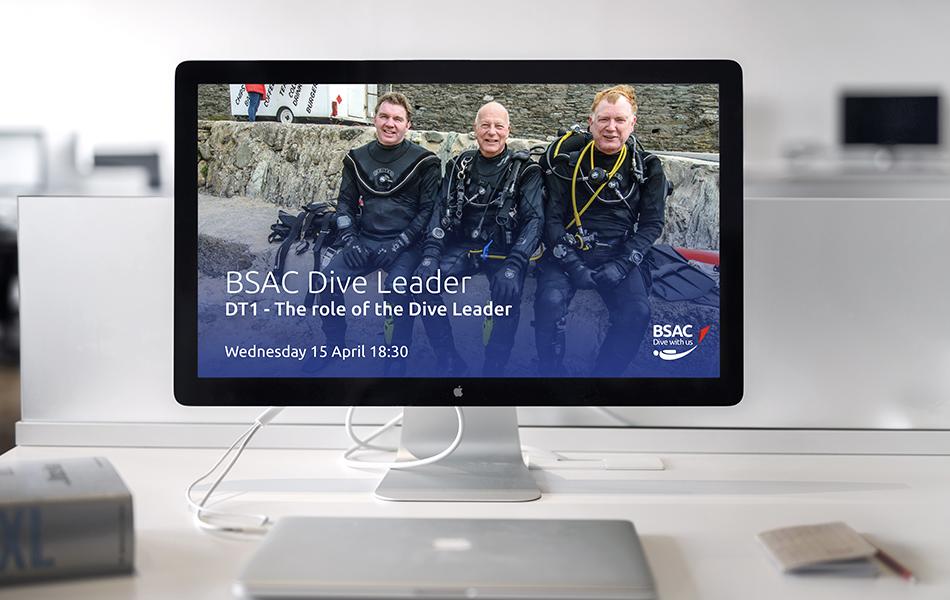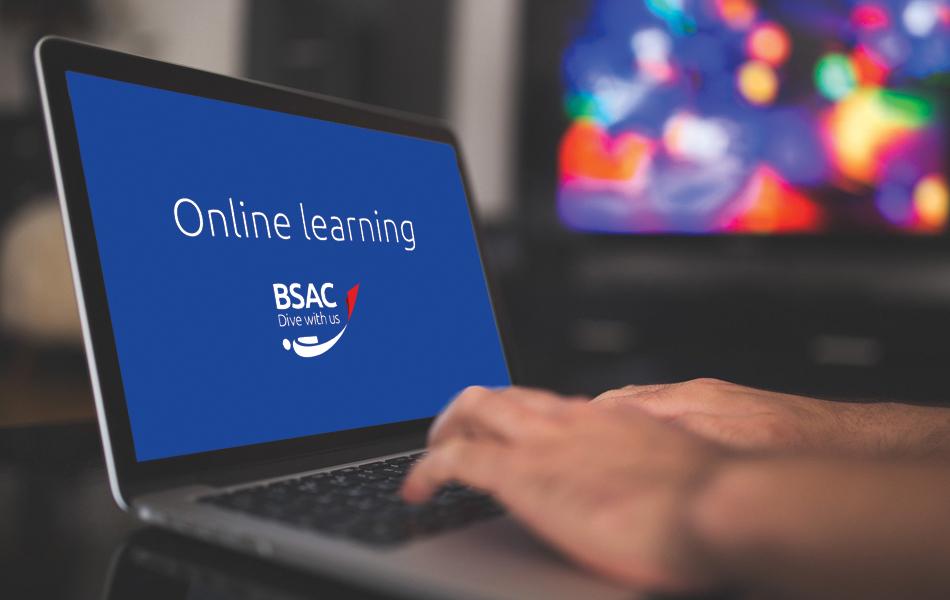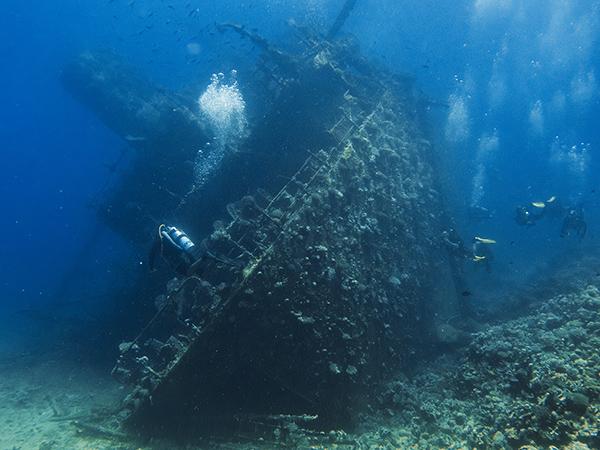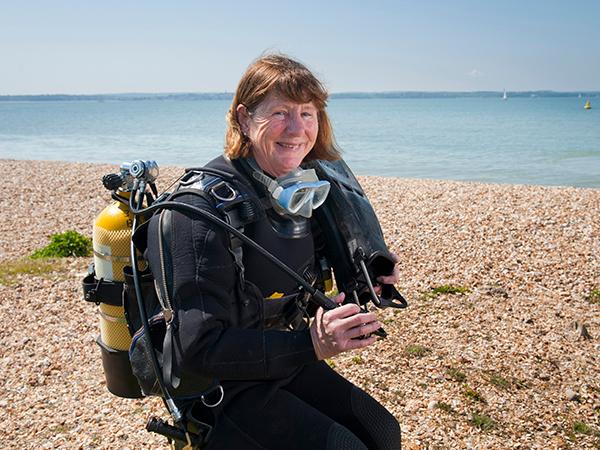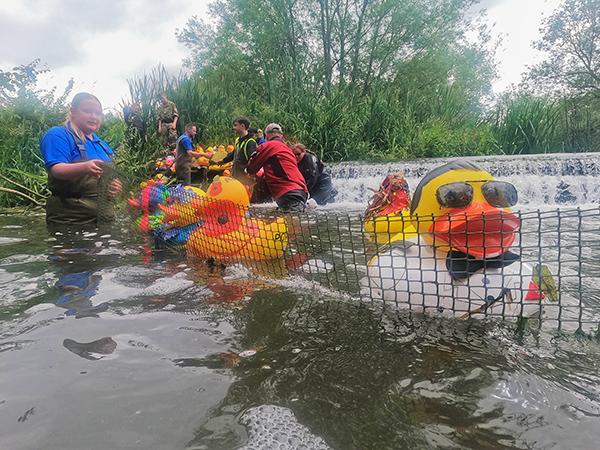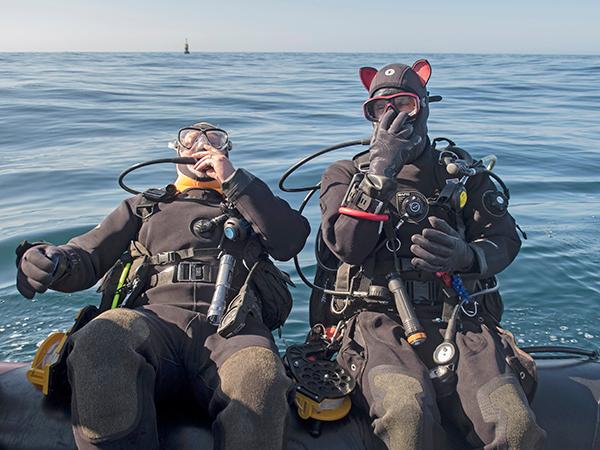It is important to keep up-to-date with current practice and amend BSAC’s procedures accordingly. There are three changes to BSAC’s Diver Training Programme (DTP) lessons and delivery as detailed below.
The changes include/cover:
- Integration of the use of Automated External Defibrillator (AED) in all Basic Life Support (BLS) lessons
- Calling for assistance
- Landing and lifting a diving casualty
1. Integration of the use of AED in all Basic Life Support (BLS) lessons
The use of the AED is a proven factor in the survivability of casualties in need of BLS. Whilst in some locations the practicalities of the dive site may mean its use is less effective if effective at all (wet moving RHIB), the use of the AED should be a primary tool in the administration of the casualty care. Many dive charter vessels are carrying AEDs and their public availability at shore dive locations is increasing. The AED should be called for as soon as possible after the casualty has been assessed as unresponsive and not breathing normally. If one is available, it should be used to supplement and support the BLS being delivered.
AED in training delivery
The instructor resources (Visual Aids and the manual) have been amended to reflect this change. Lessons ST2, SP1, DT2, DO5, DO7, AT4, AO2 are all affected by this change, as is the Skill Development Course (SDC) O2 Admin. PRM, Lifesaver and Advanced Lifesaver and Snorkeller training may also be affected in their delivery, dependent on what scenarios instructors choose to use. Instructors should access the updated resources from the BSAC website and deliver all future training utilising the current information.
Training AEDs are widely available via open sources at a cost of as little as £45. Clubs should purchase training AEDs and implement this training as soon as practical. BSAC has sourced quality training AEDs that meet the requirements and can be purchased by clubs or individual approved AED instructors at a cost of £35 per unit at bsac.com/shop. These units are ideal for use in dryland settings i.e. classroom scenarios as they have a limited ingress protection (IP) rating. In addition, BSAC Regional teams and HQ do have a limited quantity of units that can be loaned on a short-term basis. For wet locations simulation of the AED could be conducted along with discussion or if available a higher IP rated training AED could be used.
AED SDC
The AED SDC still provides additional information and training that is not covered in the diver grade training sessions and as such will remain as an additional module SDC. BSAC recommends that our members undertake the training at some stage to develop a pool of trained users within their club. It is also recommended that refresher training of users and instructors is conducted at regular intervals this could be linked in with refreshers in oxygen administration and general first aid and PRM.
AED Awareness – Online course
To assist instructors who are not AED trained or those who require a refresher on the basic use of the AED, there is now a free online eLearning awareness course accessible online. The course is a free standalone awareness package that anyone can access. On successful completion of the course, a certificate of completion can be saved and if a current member of BSAC, your success is recorded in your MyBSAC profile. All Theory instructors and above are encouraged to complete the course to ensure that they have the current knowledge to deliver the addition of the AED in the 2020 DTP. For those instructors who do not hold an AED qualification we encourage you to attend a full AED SDC or equivalent and record the information with BSAC HQ.
2. Calling for assistance
Previous versions of the Diver Training Programme (DTP) stated for in-water rescues the “Help Shout” was to be done after administering 10 rescue breaths. This is not in keeping with current practice.
The need to instigate the next level of care is crucial to the survivability of a casualty. An initial “Help Shout” should be made as soon as it is established that assistance is required.
This could be a land-based situation or a diving incident. For a diving incident immediately on surfacing, once positive buoyancy has been achieved for both casualty and rescuer a “Help Shout” should be given and then the appropriate rescue techniques commenced.
Calling for assistance in training delivery
The instructor resources (VAs and the manual) have been amended to reflect this change. Lessons ST2, SP1, DT2, DO5, DO7, AT4, AO2 are all affected by this change, as are the SDCs O2 Admin, PRM, Lifesaver and Advanced Lifesaver and Snorkeller training. Instructors should access the updated resources from the BSAC website and deliver all future training utilising the current information.
3. Landing and lifting a diving casualty
A variety of adaptations of the description of the landing technique described in previous versions of the DTP have had varying results. Some have been positive, some not so, resulting in pain and discomfort to both simulated casualty and rescuers.
Landing and lifting a diving casualty in training delivery
The technique that has been endorsed by BSAC for the recovery to the shore of a diver casualty is now incorporated into the DTP starting at lesson ST2. This technique should be utilised throughout diver training and activities where the recovery of an unresponsive/incapacitated diver is needed.
The following sequence explains the method.
Diver extraction method
- Once the divers kit has been removed the protection of the neck and airway must be maintained. Ideally, one rescuer takes responsibility for this role and so becomes the person in charge of the move.
- Rescuer 2 moves into position opposite Rescuer 1 and both rescuers, facing inwards, put their shoulders under the casualty’s arm into the armpit area and reach across the front of the casualty’s waist area gripping where possible.
- The arm not gripping the waist of the casualty is then used to either support the head and neck (rescuer 1) or to support the back of the casualty or maintain balance.
- Care must be taken to avoid injuries to the backs of the rescuers and the casualty by twisting or jolting movements. Rescuer 1 should direct the lift and movement using agreed words of command (e.g. Ready, Brace, Lift or Ready, Brace, Move).
- The rescuers can then walk forwards from the water with the casualty secured. They should walk slightly inwards towards each other to prevent the casualty from slipping from their shoulders and grip.
- Once in a safe area, the casualty can be lowered under control whilst protecting the head and neck.
- Under control, the rescuers should lower themselves to on knee then lay the casualty back gently to the floor and commence any further first aid required.
Illustration of extraction of a diving casualty using a two-person method
(Sequence below runs from left to right from top row, then bottom row)

- Head and neck support should be provided at this point by the rescuer (Please note, this was not captured in these images which we’ll look to update).
- Movement of the casualty controlled by Rescuer 1.
- Head and neck support maintained.
- Rescuers walking slightly inwards to support the casualty on their shoulders.
- Casualty recovered ideally in one move from the water to a place of safety.
- Lowering the casualty to the ground, controlled by Rescuer 1.
- Head and neck support maintained.
- Land-based rescue protocols can commence.

